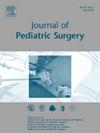Complications and Long-term Outcomes of Patients With Cloacal Malformation After Bowel Neovagina Creation
IF 2.5
2区 医学
Q1 PEDIATRICS
引用次数: 0
Abstract
Introduction
Up to 60 % of patients with a cloacal malformation have a Mullerian anomaly. In cases where the vagina is absent or cannot reach the perineum, an intestinal neovagina is often created. The complications and outcomes of this are not well described. We aimed to describe the gynecologic outcomes of patients who underwent neovagina creation followed at our institution.
Methods
A single institution retrospective review of patients ≥8 years old with cloacal malformation who underwent intestinal neovagina creation was performed. Demographics, surgical history, short-term complications, and long-term gynecologic outcomes were assessed.
Results
Forty patients were included. The median age at neovagina creation was 3.95 years (IQR 1.40, 7.61). Twelve patients (30 %) had uterine agenesis. Neovagina was colonic in 27 (67.5 %) and small bowel in 12 (30 %). Median age at most recent follow up was 9.7 years (IQR 7.6, 14.1).
There was no difference in 30-day complications, incidence of vaginal prolapse, introital stenosis, or graft stenosis between those undergoing small bowel vs colonic neovagina. Two patients had documented menstrual obstruction, and 11 patients reported bothersome vaginal discharge. Of those with neovagina prolapse, one small bowel (8.3 %) and two colonic grafts (7.4 %) required prolapse repair. One small bowel (8.3 %) and 7 colonic (26 %) patients underwent introitoplasty for stenosis. Of the 3 patients having penetrative sex, 2 reported dyspareunia. No patients have become pregnant.
Conclusion
Bowel neovaginas remain a suitable choice for patients with cloacal malformations in whom the vagina is absent or cannot reach the perineum.
Level of Evidence
IV.
肠新阴道形成后肛管畸形患者的并发症及远期预后。
高达60%的肛管畸形患者有缪勒氏管异常。在阴道缺失或不能到达会阴的情况下,通常会产生肠新阴道。其并发症和结果并没有得到很好的描述。我们的目的是描述在我们机构接受新阴道创造的患者的妇科结果。方法:对年龄≥8岁的肛管畸形患者行肠新阴道造术进行单机构回顾性分析。评估了人口统计学、手术史、短期并发症和长期妇科预后。结果:共纳入40例患者。新阴道形成的中位年龄为3.95岁(IQR 1.40, 7.61)。12例(30%)发生子宫发育不全。新阴道27例(67.5%)为结肠,12例(30%)为小肠。最近一次随访时的中位年龄为9.7岁(IQR 7.6, 14.1)。在30天的并发症、阴道脱垂的发生率、阴道内腔狭窄或移植物狭窄方面,接受小肠和结肠新阴道手术的患者没有差异。2名患者有经期梗阻,11名患者有阴道分泌物。在新阴道脱垂的患者中,一个小肠(8.3%)和两个结肠移植(7.4%)需要脱垂修复。1例小肠患者(8.3%)和7例结肠患者(26%)因狭窄行肠腔成形术。在3例插入性行为患者中,2例报告性交困难。没有病人怀孕。结论:对于阴道缺失或不能到达会阴的肛管畸形患者,肠新阴道仍是一种合适的选择。证据等级:四级。
本文章由计算机程序翻译,如有差异,请以英文原文为准。
求助全文
约1分钟内获得全文
求助全文
来源期刊
CiteScore
1.10
自引率
12.50%
发文量
569
审稿时长
38 days
期刊介绍:
The journal presents original contributions as well as a complete international abstracts section and other special departments to provide the most current source of information and references in pediatric surgery. The journal is based on the need to improve the surgical care of infants and children, not only through advances in physiology, pathology and surgical techniques, but also by attention to the unique emotional and physical needs of the young patient.

 求助内容:
求助内容: 应助结果提醒方式:
应助结果提醒方式:


